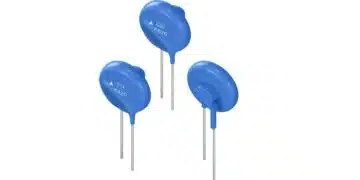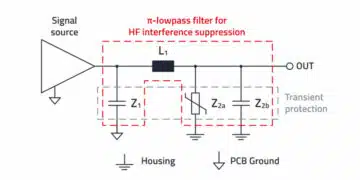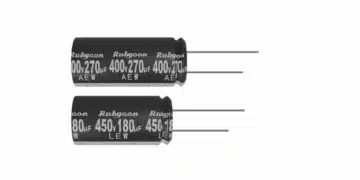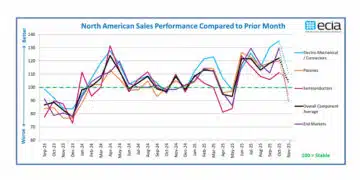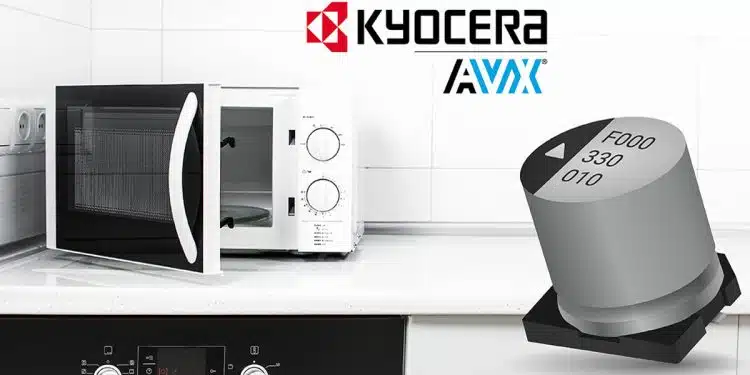KYOCERA AVX, a leading global manufacturer of advanced electronic components engineered to accelerate technological innovation and build a better future, has released the new surface-mount AEF Series wet aluminum V-chip electrolytic capacitors, which are designed for industrial and consumer electronics applications with high-density PCBs and qualified to industrial endurance levels.
The series is available in 11 different case sizes spanning 0608 to 1216 and offers a wide range of capacitance values and voltage ratings extending from 2.2–470μF and 6.3–400VDC. It also exhibits low direct leakage current (DCL), low equivalent series resistance (ESR), which enables higher tolerance for ripple currents, low impedance over the full range of category temperatures, which extend from -40°C or -55°C to +105°C, and exceptional reliability over extended lifetimes of up to 6,000 hours at +105°C and rated voltages.
In total, the new AEF Series wet aluminum electrolytic capacitors currently provides customers with a selection of 59 part numbers ideally suited for an extensive range of high-density industrial and consumer electronics ranging from lighting systems to DC/DC converters.
“We are thrilled to introduce the new surface-mount AEF Series wet aluminum V-chip electrolytic capacitors to market,” said Slavomir Pala, Technical Marketing Manager, KYOCERA AVX.
“KYOCERA AVX has a robust portfolio of high-performance aluminum electrolytic capacitors, and this latest addition provides customers with a high-endurance solution that exhibits low DCL and low ESR characteristics, delivers outstanding reliability over extended lifetimes, and is available in a wide range of capacitance values, voltage ratings, and case sizes optimized to overcome design and performance challenges in consumer and industrial electronics applications with high-density PCBs.”
In terms of installation, surface-mount AEF Series capacitors are supplied with pure tin terminations on 13” or 15” reels compatible with automated assembly equipment and support reflow assembly. AEF Series capacitors are also RoHS-compliant and lead-free compatible, and standard lead-time for the series is currently 24 weeks.


